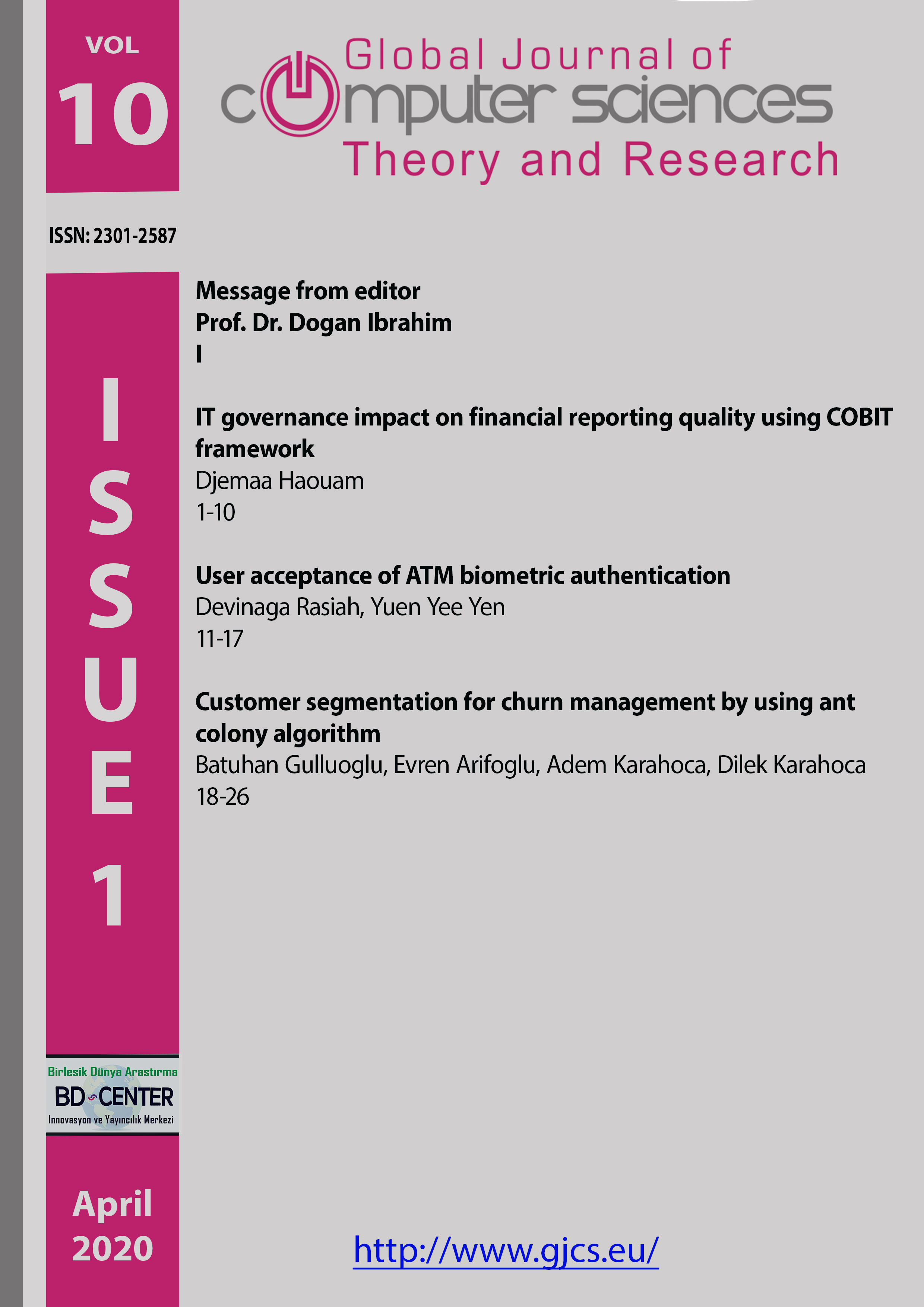
Global Journal of Computer Sciences: Theory and Research
Yazarlar: Suat Karakaya, Gurkan Kucukyildiz, Hasan Ocak
Konular:-
Anahtar Kelimeler:Brain computer interface,Motor imaginary,Random forest.
Özet: Although the motor-imagery-based brain computer interface (BCI) has become popular in recent years, its practical application is limited due to the classification accuracy of methods. In this study, a new classification scheme is proposed for the classification of multi-class motor imaginary in EEG using random forest (RF) classifier. In the proposed scheme, a four-stage binary classification tree is constructed. An RF model is trained for each stage of decision tree using features extracted from the EEG channels. The EEG band powers of each channel are the extracted features from the EEG signal. The proposed classification scheme is applied on the BCI competition IV dataset 2a recordings. The EEG data is acquired from nine subjects and the proposed scheme is performed for each subject independently. The kappa values of the proposed scheme are calculated to compare the results with the methods in the literature. It is demonstrated that the proposed classification scheme has higher kappa values than the methods in the literature.